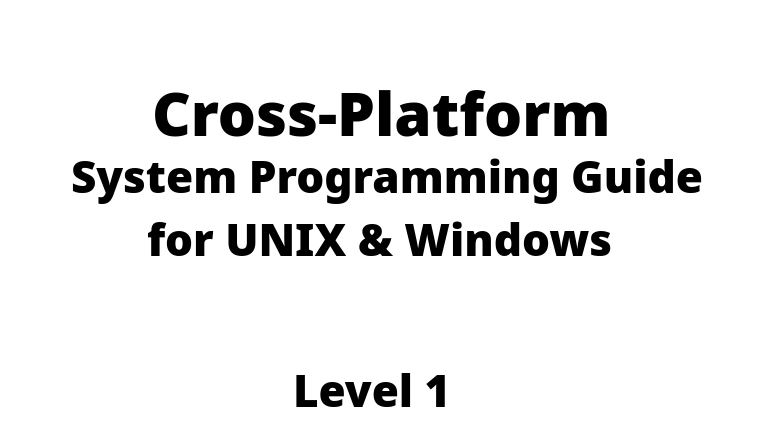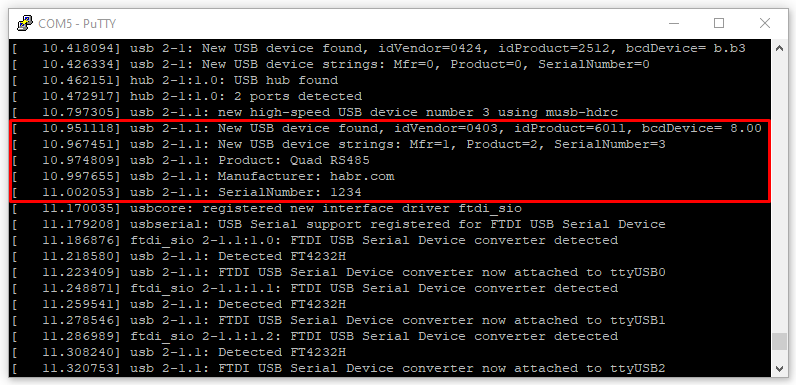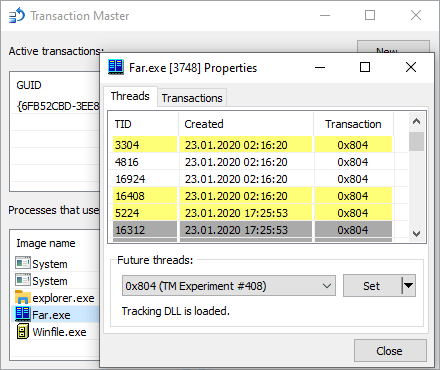The platform is designed for those who want to enhance their knowledge with simplicity. Programming tutorials and examples written in simple, understandable language for beginners and experienced. Spring Java tutorials provides well contents to learn java, spring framework and also the architecture of spring technology for professionals.

System Programming *
Low-level programming
Let's kill all frameworks at once

The general trend of technology development is characterized by surges and declines. Consider, for instance, the mass movement of human bodies. Initially, horses and wagons were used, which gradually evolved into a distinct industry. Then trains appeared abruptly. Horses were quickly forgotten, and the focus shifted to a new avenue. Steam became an object of study and evolved into a complex science. Diesel and electricity developed concurrently. At a certain point, steam engines became obsolete, and everyone transitioned to diesel and electricity. Similarly, we are now transitioning to electric cars that require significantly fewer fluids.
Technologies evolve and function until new technologies completely replace them. I believe we are entering an era where framework and Electron technologies may be eclipsed by generative AI. Let's examine some examples.
Cross-Platform System Programming Guide for UNIX & Windows: Level 1

In this tutorial we'll learn how to write cross-platform code in C using the system functions on popular OS (Windows, Linux/Android, macOS & FreeBSD): file management functions and file I/O, console I/O, pipes (unnamed), execution of the new processes. We're going to write our own small helper functions on top of low-level userspace system API and use them so that our main code can run on any OS without modifications. This tutorial is Level 1, the easiest. I split the difficult stuff into parts so the code samples here shouldn't be overwhelming for those who has just started to program in C. We'll discuss the differences between the system API and how to create a cross-platform programming interface that hides all those differences from the user.
Kernel Queue: The Complete Guide On The Most Essential Technology For High-Performance I/O

When talking about high-performance software we probably think of server software (such as nginx) which processes millions requests from thousands clients in parallel. Surely, what makes server software work so fast is high-end CPU running with huge amount of memory and a very fast network link. But even then, the software must utilize these hardware resources at maximum efficiency level, otherwise it will end up wasting the most of the valuable CPU power for unnecessary kernel-user context switching or while waiting for slow I/O operations to complete.
Thankfully, the Operating Systems have a solution to this problem, and it's called kernel event queue. Server software and OS kernel use this mechanism together to achieve minimum latency and maximum scalability (when serving a very large number of clients in parallel). In this article we are going to talk about FreeBSD, macOS and kqueue, Linux and epoll, Windows and I/O Completion Ports. They all have their similarities and differences which we're going to discuss here. The goal of this article is for you to understand the whole mechanism behind kernel queues and to understand how to work with each API.
Modula-3. The article from “Computer newspaper” N12 2000
One of the main tenets of the Unix philosophy is that a good tool for a good cause. Suppose you have a task to develop a large application that should have multiple threads of execution, possibly be distributed and, of course, have a graphical interface. I would like to make such a program quickly and without unnecessary mistakes.
I think the first question to ask in a situation like this is, "Which programming language is right?" C is not a bad choice, but not for such a project. It does not scale very well, and does not have the means of working with processes at all. Then C++? But C++ is a complex language, and past experience has shown that it will take a fair amount of time to debug memory allocation problems. What else?
There is a well-designed tool for just such a job. It is a Modula-3 language developed and implemented by the Digital Equipment Corporation Systems Research Center (SRC). Modula-3 is a modern, modular, object-oriented language. Other features include automatic memory management (built-in garbage collector), exception handling, support for dynamic types, and multi-threaded programming.
The SRC implementation includes a compiler, a minimal recompilation system (m3build), and a wide range of libraries and sample applications. It must be said that SRC Modula-3 is a free system supplied with source code, including a compiler and a run-time kernel. In addition, SRC Modula-3 has been implemented for a dozen platforms, including Windows 95/NT.
The goal of the developers of the language, in their own words, was not innovation, but the careful selection and consolidation of ideas, time-tested and proven to be useful in practice. Modula-3 is a simple but full-featured language for building large and reliable software packages with a long life cycle.
Configuring FT4232H using the ftdi_eeprom

The FT4232H is USB 2.0 High speed to UART IC converter. The FT4232H has four UART ports and one USB port.
By connecting EEPROM memory to this chip, you can set specific operating modes or change the manufacturer's data.
Let's look at the example and configure FT4232H directly on a system running GNU/Linux. We will do this using the ftdi_eeprom.
C2x: the future C standard

I strain to make the far-off echo yield
A cue to the events that may come in my day.
(‘Doctor Zhivago’, Boris Pasternak)
I’ll be honest: I don’t write in pure C that often anymore and I haven’t been following the language’s development for a long time. However, two unexpected things happened recently: С won back the title of the most popular programming language according to TIOBE, and the first truly interesting book in years on this language was published. So, I decided to spend a few evenings studying material on C2x, the future version of C.
Here I will share with you what I consider to be its most interesting new features.
External Interrupts in the x86 system. Part 3. Interrupt routing setup in a chipset, with the example of coreboot
We continue to investigate external device interrupt routing setup in the x86 system.
In Part 1 (Interrupt controller evolution) we looked at the theory behind interrupt controllers and all the necessary terminology. In Part 2 (Linux kernel boot options) we looked at how in practice the OS chooses between different interrupt controllers. In this part we will investigate how the BIOS sets IRQ to the interrupt controllers routing in a chipset.
None of the modern BIOS developer companies (AwardBIOS/AMIBIOS/Insyde) open their source code. But luсkily there is coreboot — a project aimed at replacing proprietary BIOS with free firmware code. In its source code we'll see what is needed to setup the interrupt routing in a chipset.

External Interrupts in the x86 system. Part 2. Linux kernel boot options
In the last part we discussed evolution of the interrupt delivery process from the devices in the x86 system (PIC → APIC → MSI), general theory, and all the necessary terminology.
In this practical part we will look at how to roll back to the use of obsolete methods of interrupt delivery in Linux, and in particular we will look at Linux kernel boot options:
- pci=nomsi
- noapic
- nolapic
Also we will look at the order in which the OS looks for interrupt routing tables (ACPI/MPtable/$PIR) and what the impact is from the following boot options:
- pci=noacpi
- acpi=noirq
- acpi=off
You've probably used some combination of these options when one of the devices in your system hasn't worked correctly because of an interrupt problem. We'll go through these options and find out what they do and how they change the kernel '/proc/interrupts' interface output.
How to Make Any Process Work With Transactional NTFS: My First Step to Writing a Sandbox for Windows
 One of the modules in the Windows kernel provides support for combining a set of file operations into an entity known as a transaction. Just like in databases, these entities are isolated and atomic. You can make some changes to the file system that won't be visible outside until you commit them. Or, as an alternative, you can always rollback everything. In any case, you act upon the group of operations as a whole. Precisely what needed to preserve consistency while installing software or updating our systems, right? If something goes wrong — the installer or even the whole system crashes — the transaction rolls back automatically.
One of the modules in the Windows kernel provides support for combining a set of file operations into an entity known as a transaction. Just like in databases, these entities are isolated and atomic. You can make some changes to the file system that won't be visible outside until you commit them. Or, as an alternative, you can always rollback everything. In any case, you act upon the group of operations as a whole. Precisely what needed to preserve consistency while installing software or updating our systems, right? If something goes wrong — the installer or even the whole system crashes — the transaction rolls back automatically.
From the very first time I saw an article about this incredible mechanism, I always wondered how the world would look like from the inside. And you know what? I just discovered a truly marvelous approach to force any process to operate within a predefined transaction, which this margin is too narrow to contain. Furthermore, most of the time, it does not even require administrative privileges.
Let's then talk about Windows internals, try out a new tool, and answer one question: what does it have to do with sandboxes?
On request of Embedded Developers: Detecting Errors in Amazon FreeRTOS

.NET: Tools for working with multi-threading and asynchrony – Part 1
The second part of the article is available here
The need to do things in an asynchronous way – that is, dividing big tasks between multiple working units – was present long before the appearance of computers. However, when they did appear, this need became even more obvious. It is now 2019, and I’m writing this article on a laptop powered by an 8-core Intel Core CPU which, in addition to this, is simultaneously working on hundreds of processes, with the number of threads being even larger. Next to me, there lies a slightly outdated smartphone which I bought a couple of years ago – and it also houses an 8-core processor. Specialized web resources contain a wide variety of articles praising this year’s flagship smartphones equipped with 16-core CPUs. For less then $20 per hour, MS Azure can give you access to a 128-core virtual machine with 2 TB RAM. But, unfortunately, you cannot get the most out of this power unless you know how to control interaction between threads.
External Interrupts in the x86 system. Part 1. Interrupt controller evolution
- What is PIC and what is it for?
- What is APIC and what is it for? What is the purpose of LAPIC and I/O APIC?
- What are the differences between APIC, xAPIC, and x2APIC?
- What is MSI? What are the differences between MSI and MSI-X?
- What is the role of the $PIR, MPtable, and ACPI tables?
If you want to know the answer for one of these questions, or if you simply want to know about interrupt controller evolution, please, welcome.
Making Git for Windows work in ReactOS
Good day to you! 
My name is Stanislav and I like to write code. This is my first english article on Habr which I made due to several reasons:
- Habr is now in English
- Lack of technical articles in the ReactOS hub
- Recent return of Geektimes to Habr
- Possibility of building ReactOS in ReactOS
- Quite interesting case of fixing the problem in ReactOS in which I was directly involved
This article is an english version of my very first article on russian.
Let me introduce the main figures in this story who actually fixed the bug preventing Git from running in ReactOS — the French developer Hermès Bélusca-Maïto (or just Hermes with hbelusca nickname) and of course me (with x86corez nickname).
The story begins with the following messages from the ReactOS Development IRC channel:
Jun 03 18:52:56 <hbelusca> Anybody want to work on some small problem? If so, can someone figure out why this problem https://jira.reactos.org/browse/CORE-12931 happens on ReactOS? :D
Jun 03 18:53:13 <hbelusca> That would help having a good ROS self-hosting system with git support.
Jun 03 18:53:34 <hbelusca> (the git assertion part only).Running image viewer from Windows XP on modern Windows

Download: shimgvw_xp32.7z (includes a binary and source code of the launcher, and the shimgvw.dll from English Windows XP SP3).